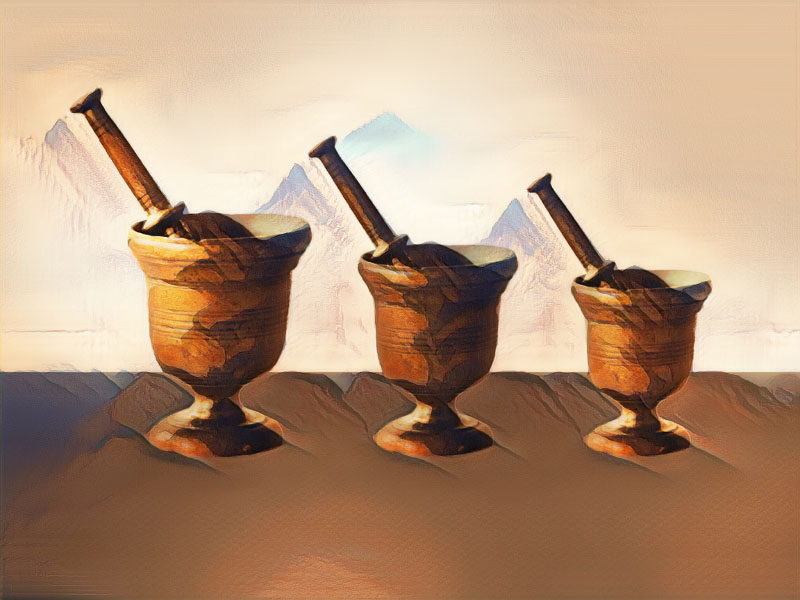The copper mortar in Sudanese folk beliefs and customs
Issue 56

Dr Salwa Abdul Majid Ahmad Al-Mashli
Sudan
The copper mortar is an old hand tool that the Sudanese imported from the Arab Republic of Egypt. The Egyptians used it for grinding or Harjalatak rituals. In the GCC countries, it is used for grinding saffron and other ingredients for perfumes.
The paper relied on the historical, descriptive and analytical approaches and the collection of field data, which included oral narratives from the research community, interviews and observations, and a combination of the two methods.
This paper focuses on the historical approach to determine the cultural origins of the mortar’s use in traditions and beliefs.
The copper mortar tool is round, about ten centimetres wide and less than one centimetre thick with a long handle used for hammering, and it weighs at least one kilogramme. A tool of material folk culture, it has several uses in Sudanese cuisine, the most notable of which is grinding spices such as coriander, cinnamon and cardamom. It is also used to grind dry ingredients such as cloves and musk to make the unique perfume worn by Sudanese women. Goldsmiths use the copper mortar to grind nuggets so they can extract and refine gold.
Like Islamic cupping, the mortar is used to cure back pain in folk medicine, and it is part of folk beliefs and knowledge because it is a folklore item according to Richard Dorson's classification of folk social traditions. Back pain is treated with a coin such as the Sudanese pound or any heavy metal object that will stay still on the patient's body during treatment. The coin is wrapped in a flammable cotton cloth that absorbs oil without shrinking. The cloth-covered coin is placed on the painful area, then the top of the cloth is set alight and placed inside a jar that is turned, followed by the turning of the copper mortar. Women who want to have babies receive the same treatment with the mortar for three days.
Harjalatak rituals, which take place a week after a baby is born, are a sort of performing art and drama in which all participants including the mother, the new-born and the guests are assigned roles. The rituals also include candles and walking around the house, and certain texts are recited while music plays at the celebration. Both the baby and the mother wear distinctive clothing.
Mortars are frequently hammered by candlelight after sunset because churches are lit with candles at night. As manifested in folk beliefs and rituals, this religious custom with its spiritual components had an impact on Sudanese culture. The emotional impact of the church bells played a role in instilling this Christian tradition.
Due to the high cost of copper and the availability of wood and iron mortars, the use of the copper mortar began to wane. Over time, it became a symbol of folk culture and a material instrument that communicated a sense of place.







































































